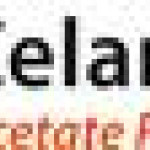- Industry: Textiles
- Number of terms: 9358
- Number of blossaries: 0
- Company Profile:
Celanese Corporation is a Fortune 500 global technology and specialty materials company with its headquarters in Dallas, Texas, United States.
Fabrics used as filter media or separators in subsurface drainage systems. The fabric is installed around the drainage pipe, or coarse stone in the drain; it allows water to pass freely from the soil to the drain, but prevents soil particles from migrating into the drain system. These fabrics are also used as outer coverings in prefabricated drainage composites and serve the same function as a filtering medium.
Industry:Textiles
Glass fiber is used for heat and electrical insulation, filter cloth in the chemical and dye industries, reinforcing belts in tires, novelty fabrics, tablecloths, and fireproof draperies. Because of its brittleness, it is not used in wearing apparel or in household fabrics that have to withstand frequent flexing.
Industry:Textiles
Fabric systems installed between the old and new asphalt layers during pavement resurfacing. The fabric absorbs the tack coat sprayed on the old surface thus forming a permanent moisture barrier to protect the subgrade from strength loss due to water intrusion. The fabric system also helps retard reflective cracking by serving as a flexible layer to diffuse stress.
Industry:Textiles
Glass fiber is incombustible and will tolerate heat up to 1000°F without material damage. Potential strength is not realized in woven fabrics or even in yarns, because the fiber is brittle and fracture points may develop, but nevertheless, very high tensile strength is obtained in woven fabrics, and is retained at elevated temperatures. The fiber originally was difficult to color but methods have been developed to accomplish this. Moisture absorption is low. Electrical and insulation resistance is high.
Industry:Textiles
A rotary carpet printing machine in which each rotary screen has a slotted squeegee inside to feed print pastes through the screens to the carpet. Pressure of the print paste is adjusted by hydrostatic head adjustments.
Industry:Textiles
A carpet printing machine that uses flat screens and dual, metal-roll squeegees. The squeegees are operated by electromagnets to control the pressure applied. The unit also has a steamer for dye fixation. The Zimmer flatbed machine is normally used for carpets of low to medium pile heights. Very precise designs are possible, but speeds are slower than with rotary screen printers.
Industry:Textiles
A type of knitting in which the yarns generally run lengthwise in the fabric. The yarns are prepared as warps on beams with one or more yarns for each needle. Examples of this type of knitting are tricot, milanese, and raschel knitting.
Industry:Textiles
The printing of a design on the sheet of warp yarns before weaving. The filling is either white or a neutral color, and a grayed effect is produced in the areas of the design.
Industry:Textiles
A common type of knitting, in which one continuous thread runs crosswise in the fabric making all of the loops in one course. Weft knitting types are circular and flat knitting.
Industry:Textiles
A carpet printing machine in which coloris applied to the carpet with a neoprene sponge laminated to the pattern.The pattern is cut in a rubber base attached to a wooden roll. It is verysimilar to relief printing. Used primarily for overprinting random patterns on dyed carpets.Suitable for shags and plush carpets as well as level loop and needletuft types.
Industry:Textiles
